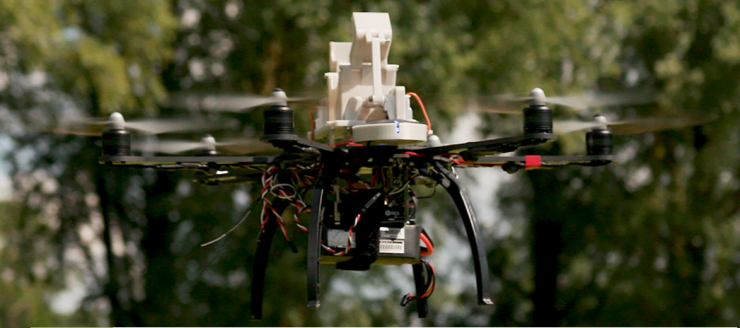The EU-funded Drones4Safety research project launched on 1 June 2020 aims to develop an automated drone system to monitor bridges, railroads, and other critical infrastructure. The drones will fly in swarms, photograph and analyse structures, harvest energy from power cables, and notify if repairs are needed. Two use cases for bridge and railway inspections will be conducted to evaluate the project outcomes. The project has received a grant of 26 million DKK through EU Horizon 2020 programme and runs from June 2020-2023.
According to the European Commission fact sheet, the Drones4Safety project aims to increase the safety of the European civil transport system by building a cooperative, autonomous, and continuously operating drone system that will be offered to railway and bridge operators to inspect their transportation infrastructure accurately, frequently, and autonomously. Research includes designing energy harvesters to tap energy from the overhead electricity infrastructures of railways and power lines to recharge drones. The project will use satellite and open maps to identify the parts of the transport infrastructure and feed that information to its drones for scheduling their autonomous missions. It will also develop and improve the state-of-the-art artificial intelligence algorithms to optimise the inspection results onboard the drone.
The project will build a swarm drone system that uses advanced low power long range communication network techniques to inspect different parts of the infrastructure at the same time. Navigation based on advancements in EGNOS/Galileo GNSS will improve accuracy of geo-location of inspection events. The project’s outcomes will be offered to the transportation operators in forms of software services and hardware drone system.
The project brings together leading industrial, research, and academic experts in infrastructure inspection, energy harvesting, artificial intelligence, communications, and drone technology
Drones4Safety’s outcomes will be presented to transportation operators in the form of software services and hardware drone systems.
The consortium consists of nine partners: Syddansk Universitet – University of Southern Denmark; Aarhus Universitet; Fraunhofer-Gesellschaft; EUCENTRE; Delair; NEAT SL; Automotive & Rail Innovation Center GmbH, Deep Blue SRL, and Eurocontrol.
Project leader, University of Southern Denmark Drone Center associate professor Emad Samuel Malki Ebeid said: ”It is about increasing the safety of transport. Many will remember pictures from the collapse of a highway bridge in Genoa. This is something we want to prevent with the project.
“We have conducted a preliminary analysis which shows that 70 percent of Europe’s bridges are within a three kilometers radius of power cables or rail cables. The idea is to develop an autonomous system of
swarm drones, that can harvest energy from the cables and monitor infrastructure through artificial intelligence and computer vision,” he said.
Drones are estimated to reduce inspection costs by more than EUR15 billion every year. The system will also be more efficient than manual inspection since drones can work around the clock and sneak into otherwise impassable places.
For more information visit:
https://cordis.europa.eu/project/id/861111
https://www.sdu.dk/en/om_sdu/fakulteterne/teknik/nyt_fra_det_tekniske_fakultet/droner-i-flok




